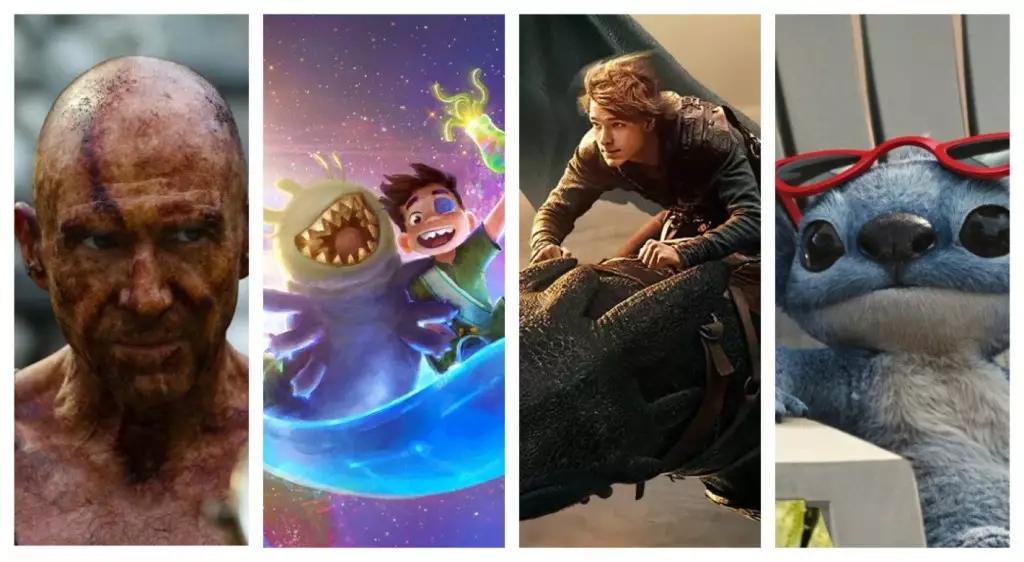Danny Boyle’s latest directorial effort, “28 Years Later,” has burst onto the cinematic landscape with a noteworthy $60 million global opening. This achievement defies the trends typically associated with horror films, which often face steep uphill battles in both domestic and international markets. With a balanced box-office split of $30 million on both sides of the ocean, the film not only meets but exceeds industry expectations—a crucial factor in a saturated genre often burdened by formulaic narratives and predictability.
Placing this opening in context reveals a landscape ripe for critical analysis. By outperforming established franchise benchmarks like “A Quiet Place: Part II” and “Evil Dead Rise,” “28 Years Later” stands as a testament to the potential of original cinema, giving audiences a fresh and compelling option amidst a glut of sequels and reboots. The R-rated film brings together Boyle’s unique artistry and a storyline capable of revitalizing interest in the horror genre, leading one to wonder if audiences are yearning for something more authentic and gripping than what has been presented by traditional franchises.
The Box Office Breakdown: Success Across Borders
The film’s launch in international markets was met with strong enthusiasm, particularly in the UK, where it debuted at No. 1 with $6.4 million. Such numbers are not merely reflective of Boyle’s directorial status; they signify a broader cultural shift where audiences are increasingly supportive of auteur-led projects. Mexico’s $2.7 million and the Middle East’s $1.8 million further bolster the notion that good storytelling can universally resonate, irrespective of geographical boundaries.
Moreover, when placed side-by-side with Disney/Pixar’s “Elio,” a film that underperformed with a $35 million global take, the divergence in audience engagement becomes clear. While “Elio” received favorable reactions and social media buzz—an often misleading metric of box-office potential—it begs the question: Is the market subtly turning against the animated giants in favor of more mature or provocative storytelling? This isn’t merely about numbers; it’s about audience sentiment toward the narratives being offered. Are family-friendly animations nearing a saturation point? Could horror, twisted and gritty as it is, be the new frontier for cinematic storytelling?
The Implications of “28 Years Later” in Cinematic Discourse
Boasting one of the most successful debuts in recent horror cinema, “28 Years Later” poses a challenge to the prevailing attitudes towards horror films in general. Horror has traditionally been an undervalued genre in the box office, often relegated to lower-tier budgets and creative risks. Yet, this film signals a critical turning point; it showcases that intellectual, auteur-driven work can perform powerfully in a genre that is often dismissed as lowbrow.
Moreover, its success invites further exploration of how horror films can be considered not just as entertainment but as a means of societal reflection. The ongoing dialogue around the social implications of horror—be it commentary on current events or a deeper psychological exploration—positions “28 Years Later” as a potential cultural touchstone.
As audiences grapple with the complexities of modern life, films that evoke fear and paranoia can often resonate more profoundly than mainstream fare that lacks substantive underpinning. This schism may lead to more studios gravitating toward those with unique visions—an invigorating prospect for the future of cinema.
More Than Just Numbers: Resetting Audience Expectations
While figures and statistics drive much of the discussion about movie success, they shouldn’t overshadow the profound impact of storytelling. “28 Years Later” may not just be hailed for its box-office triumph—it might redefine how horror is perceived and produced. The rise of such films challenges traditional models in which only established franchises command attention, suggesting that original tales can still balance creativity and commercial viability.
What’s particularly noteworthy is that “28 Years Later” fosters a renewed sense of optimism for creative filmmakers operating on the fringes. It reflects a growing appetite for narratives that are compelling yet uncompromisingly dark. The criticism often levied against the horror genre—that it thrives on shock value rather than substance—might soon be overturned as audiences demonstrate a clear preference for films that intertwine nightmare with nuance.

